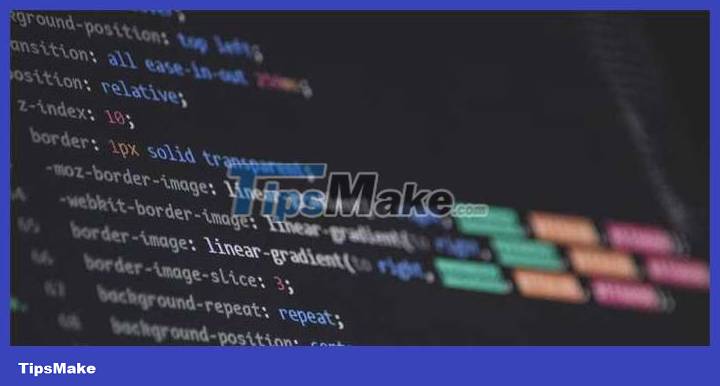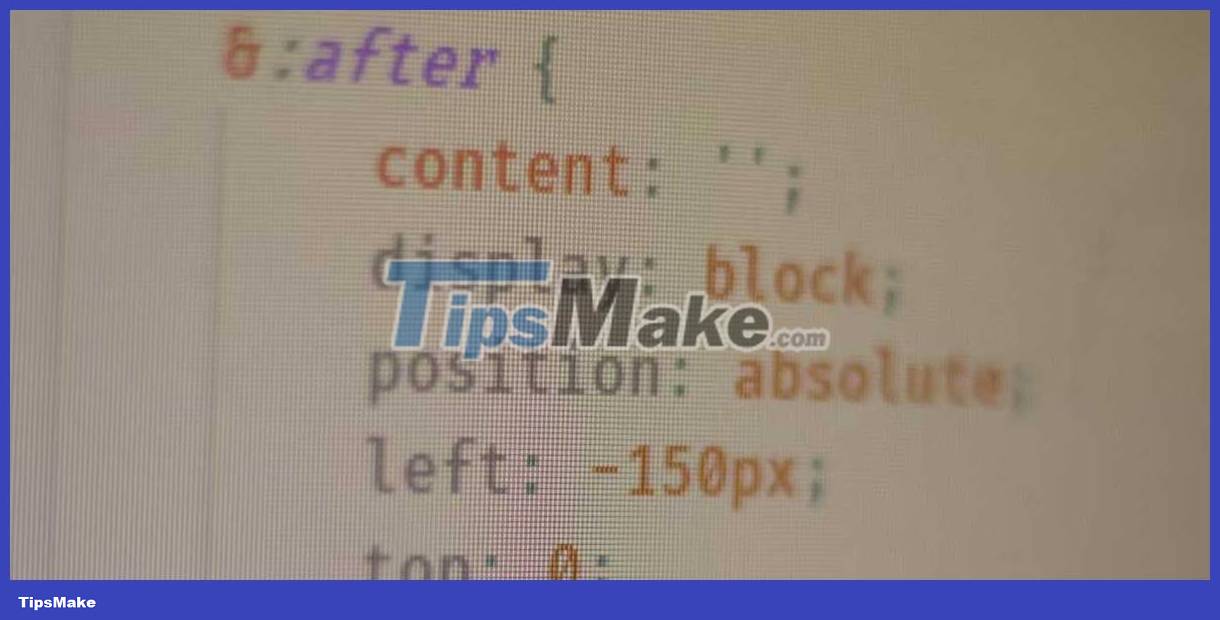The difference between Sass and SCSS: Which CSS Preprocessor is right for you?
The difference between Sass and SCSS syntax is very difficult to detect. So, make sure you understand them before making a choice.

As a front-end developer, tool choice can significantly impact the workflow and quality of the project. When it comes to creating maintainable CSS for your project, choosing a CSS Preprocessor plays an important role.
Sass and SCSS stand out as a popular choice in this context. However, which decision is best for your project depends on your understanding of their differences, features, and benefits.
What is CSS Preprocessor?

CSS Preprocessor is a tool that extends the features of regular CSS. They do so by converting files using a new syntax, providing additional functionality to regular CSS. Preprocessors take basic and advanced CSS language to make your style sheets easier to read and maintain.
Although CSS Preprocessors may be similar to frameworks and libraries, they operate more independently of your codebase, focusing on compiling CSS files. This feature supports variable inclusion, nesting, and combinations.
Some CSS preprocessors you can use are:
- Stylus for minimalist and flexible syntax.
- LESS for its simple, CSS-like experience.
- Sass and SCSS provide powerful features and ease of use.
- PostCSS for highly customizable methods.
Sass: Features and Benefits
Sass is one of two syntax variations available in the CSS preprocessor. It uses indentation to structure code instead of curly braces and semicolons that CSS uses. Some outstanding features include:
- Variables : Sass allows you to use variables to store and reuse values, promoting consistency across design elements and simplifying global changes.
- Nesting : It organizes CSS rules hierarchically, organizes code, nests Sass, as opposed to native CSS nesting using selectors, providing a more intuitive and easy to understand approach.
- Mixins : Sass supports mixins, which are reusable blocks of code and help maintain a cleaner codebase.
- Functions : You can create and use functions in Sass for various calculations in style sheets.
- Import : It allows you to separate styles into modules that you can import whenever needed.
Sass streamlines CSS development with clean and organized code. It promotes design consistency, reusability, and efficiency. Responsive design and cross-browser compatibility become easier to manage.
SCSS: Features and benefits

SCSS, is the second syntax in the Sass preprocessor. It is a superset of CSS. Unlike the original Sass syntax, which relied on indentation and ignored curly braces and semicolons, SCSS adopts regular CSS syntax. This makes it accessible to developers familiar with CSS.
It is similar to the original Sass syntax in terms of features and benefits.
Key differences between Sass and SCSS
| Sass | SCSS | |
| Readability | Some people find it concise but it can be more difficult to read, especially for those familiar with CSS | Easier to read, especially for CSS-savvy developers |
| Acceptance | Refuse to accept in favor of Sass | Choice has prevailed in recent years |
| File extension | Ends with .sass | Ends with .scss |
| Compatibility | Additional transformations may be needed for the existing CSS file | Directly compatible with CSS |
| Document | Provide documentation as SassDoc | Provide documentation right in the code |
While indentation-based syntax may be more attractive, SCSS's CSS-like syntax is more widely used because of its readability and compatibility with existing CSS.
Above is the basic difference between Sass and SCSS. Hope this article is useful to you!
You should read it
- What is the difference between GUI and CLI?
- Difference between Web 2.0 and Web 3.0
- What is the difference between PCIe 3.0, PCIe 4.0 and PCIe 5.0?
- Difference between Tor and VPN
- Difference between Zsh and Bash
- Difference between LGA and PGA CPU socket
- Difference between Ethernet and LAN
- Difference between LAN, MAN and WAN
May be interested
- Difference between Zsh and Bash
 both shells provide powerful scripting languages but they are not fully compatible with each other. let's find out the difference between zsh and bash with tipsmake.com.com!
both shells provide powerful scripting languages but they are not fully compatible with each other. let's find out the difference between zsh and bash with tipsmake.com.com! - Difference between LGA and PGA CPU socket
 cpu sockets may not hold a high place in your computer selection criteria list. however, they have an impact on cost and performance, so understanding the difference between the two most common types of cpu sockets is helpful.
cpu sockets may not hold a high place in your computer selection criteria list. however, they have an impact on cost and performance, so understanding the difference between the two most common types of cpu sockets is helpful. - Difference between Ethernet and LAN
 ethernet and lan are closely related, in that ethernet is the main technology that makes the concept of lan become reality. the main difference between ethernet and lan is that the operation of ethernet is decentralized, while lan is the opposite.
ethernet and lan are closely related, in that ethernet is the main technology that makes the concept of lan become reality. the main difference between ethernet and lan is that the operation of ethernet is decentralized, while lan is the opposite. - Difference between LAN, MAN and WAN
 the network allows computers to connect and communicate with other computers through any means. lan, man and wan are three types of networks designed to operate on the area they cover. there are several similarities and differences between them.
the network allows computers to connect and communicate with other computers through any means. lan, man and wan are three types of networks designed to operate on the area they cover. there are several similarities and differences between them. - Difference between GDDR RAM and RAM
 gddr ram and system ram are common terms that you will come across in the desktop world. while these terms may seem similar and interchangeable, they are not.
gddr ram and system ram are common terms that you will come across in the desktop world. while these terms may seem similar and interchangeable, they are not. - Difference between Internet and Web
 what are the similarities and differences between the internet and the web? for those who understand information technology, these two concepts are no longer strange, but for those who are just starting to learn, they may not clearly understand the concept as well. their effects, the content below, taimienphi will show you the difference between the internet and the web.
what are the similarities and differences between the internet and the web? for those who understand information technology, these two concepts are no longer strange, but for those who are just starting to learn, they may not clearly understand the concept as well. their effects, the content below, taimienphi will show you the difference between the internet and the web. - Difference between NUC and SBC
 people often compare intel's next unit of computing (nuc) devices to single-board computers. the comparison is based on the fact that many people think that these two devices are more or less similar. although not completely unfounded, this assumption is false.
people often compare intel's next unit of computing (nuc) devices to single-board computers. the comparison is based on the fact that many people think that these two devices are more or less similar. although not completely unfounded, this assumption is false. - The difference between TCP and UDP protocols
 you may have seen tcp and udp when setting up port forwarding on the router or when configuring the firewall software. these two protocols are used for different data types.
you may have seen tcp and udp when setting up port forwarding on the router or when configuring the firewall software. these two protocols are used for different data types. - If you can find a difference in 10 seconds, you're really a genius!
 if you can find a difference in 10 seconds, you're really a genius! try fastness with 6 images below!
if you can find a difference in 10 seconds, you're really a genius! try fastness with 6 images below! - The difference between the URL and the URI
 the terms uri and url are often used interchangeably, but they are not exactly the same. a url is a specific type of uri that provides a location / method of access.
the terms uri and url are often used interchangeably, but they are not exactly the same. a url is a specific type of uri that provides a location / method of access.










 How to reuse logic in Vue.js with composite components
How to reuse logic in Vue.js with composite components Tiny11 core, Windows 11 version weighs only 2GB, runs smoothly on PC with 4GB RAM
Tiny11 core, Windows 11 version weighs only 2GB, runs smoothly on PC with 4GB RAM If you see your information using Google Search, you can use this tool to remove it
If you see your information using Google Search, you can use this tool to remove it The difference between quantum computers and supercomputers
The difference between quantum computers and supercomputers Xiaomi officially launched HyperOS: Super light, supports many AI features, improves performance
Xiaomi officially launched HyperOS: Super light, supports many AI features, improves performance Microsoft makes glass hard drives that last 10,000 years
Microsoft makes glass hard drives that last 10,000 years